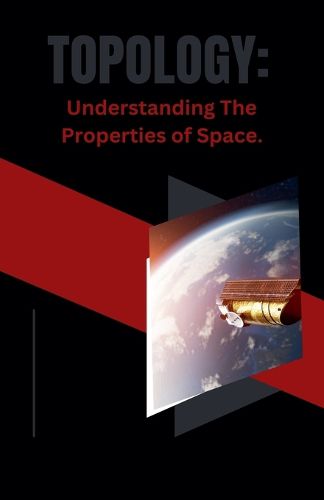Readings Newsletter
Become a Readings Member to make your shopping experience even easier.
Sign in or sign up for free!
You’re not far away from qualifying for FREE standard shipping within Australia
You’ve qualified for FREE standard shipping within Australia
The cart is loading…






This title is printed to order. This book may have been self-published. If so, we cannot guarantee the quality of the content. In the main most books will have gone through the editing process however some may not. We therefore suggest that you be aware of this before ordering this book. If in doubt check either the author or publisher’s details as we are unable to accept any returns unless they are faulty. Please contact us if you have any questions.
Introduction to Topology.
Getting Started with Topology.
The study of space and its characteristics that are maintained via continuous changes (e.g., stretching, bending, and deformation) but not by tearing or cutting is known as topology. Mathematics' bedrock subject, topology tries to understand spaces and their connections without using conventional metrics like length or angle. On the contrary, it places an emphasis on research into spatial features that do not change when subjected to certain changes.
Prior Knowledge.
Topology as we know it now has its origins in the work of the great 18th-century mathematician Leonard Euler, who investigated the renowned Seven Bridges of Koenigsberg issue. What is today known as graph theory-a subfield of topology-was born out of Euler's answer to this problem.
But the word "topology" didn't materialize until the early 1900s, thanks to mathematicians like August Ferdinand Moebius-famous for discovering the Moebius strip, a basic object in topology-and Johann Benedict Listing, who coined the term in 1847 (or "Topologie" in German).
Several figures from the late 19th and early 20th centuries, including Henri Poincare and Felix Hausdorff, had a significant impact on the formalization and growth of topology. Over time, topology has developed into a vast and crucial branch of mathematics that is utilized in numerous scientific fields.
$9.00 standard shipping within Australia
FREE standard shipping within Australia for orders over $100.00
Express & International shipping calculated at checkout
This title is printed to order. This book may have been self-published. If so, we cannot guarantee the quality of the content. In the main most books will have gone through the editing process however some may not. We therefore suggest that you be aware of this before ordering this book. If in doubt check either the author or publisher’s details as we are unable to accept any returns unless they are faulty. Please contact us if you have any questions.
Introduction to Topology.
Getting Started with Topology.
The study of space and its characteristics that are maintained via continuous changes (e.g., stretching, bending, and deformation) but not by tearing or cutting is known as topology. Mathematics' bedrock subject, topology tries to understand spaces and their connections without using conventional metrics like length or angle. On the contrary, it places an emphasis on research into spatial features that do not change when subjected to certain changes.
Prior Knowledge.
Topology as we know it now has its origins in the work of the great 18th-century mathematician Leonard Euler, who investigated the renowned Seven Bridges of Koenigsberg issue. What is today known as graph theory-a subfield of topology-was born out of Euler's answer to this problem.
But the word "topology" didn't materialize until the early 1900s, thanks to mathematicians like August Ferdinand Moebius-famous for discovering the Moebius strip, a basic object in topology-and Johann Benedict Listing, who coined the term in 1847 (or "Topologie" in German).
Several figures from the late 19th and early 20th centuries, including Henri Poincare and Felix Hausdorff, had a significant impact on the formalization and growth of topology. Over time, topology has developed into a vast and crucial branch of mathematics that is utilized in numerous scientific fields.